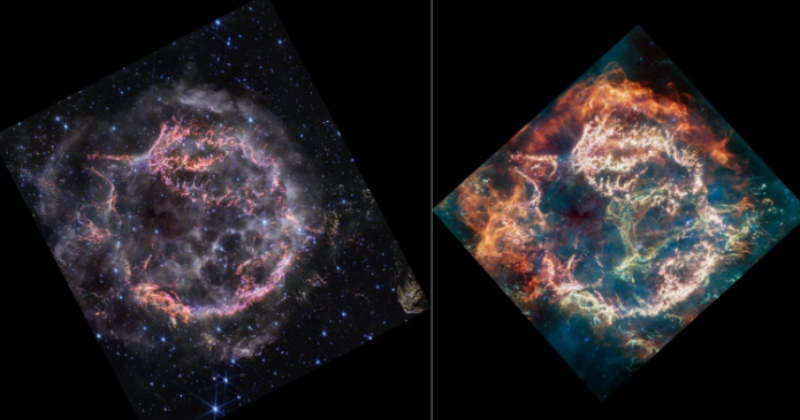The European Space Agency (ESA) has shown an incredible vision of a celestial spectacle: an exploding star that “shattered like glass.”
This cosmic event, seen with never-before-seen clarity, shows the complex dance of star fragments hanging in space.
With the help of ESA’s cutting-edge technology, we can see what happens when a star explodes, giving us a deep understanding of the cosmic forces involved.
This astonishing image transforms the fragments of this broken star into a cosmic masterpiece, deepening our understanding of stellar events by showing the fascinating beauty hidden beneath the explosive outbursts of the universe.
Jump to
- Here are the photos and videos.
- What did they show?
- Where can you check the publication?
Here are the photos and videos.
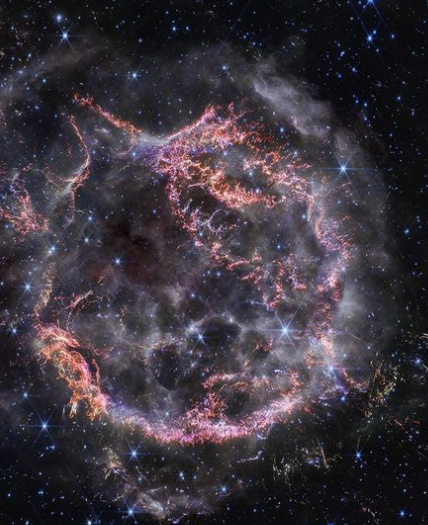
Credit: Instagram
The astonishing view from deep space is captured in a collection of photographs and videos that the European Space Agency (ESA) posted on Instagram.
These images, taken with the James Webb Space Telescope, show the remains of a star that “shattered like glass” after a supernova.
What did they show?
This near-infrared image shows a very intense explosion from the supernova remnant Cassiopeia A (Cas A), which was previously unreachable at these wavelengths.
The space agency said: “This high-resolution view reveals intricate details of the expanding shell of material colliding with gas released by the star before exploding.”
The content of each image and video is explained in the following lines:.
Fusion causes stars to burn, releasing energy from their centers. However, as large stars age and run out of fuel, the pull of their gravity overcomes the pull of fusion.
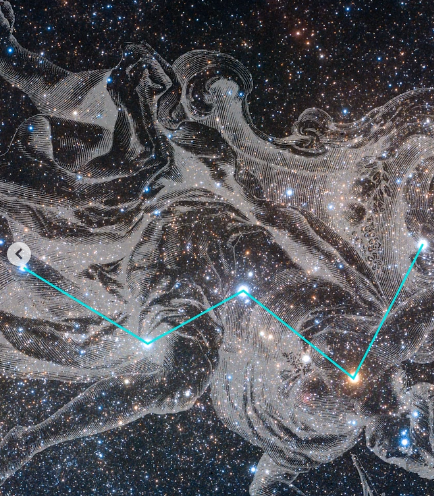
Credit: Instagram
Materials from the collapsing star are ejected into space by an explosion. Supernovae are the main source of heavy element formation in the cosmos.
About 340 years ago, light from the Cassiopeia A explosion reached Earth. Scientists estimate that the star that produced the explosion had a mass sixteen times that of the Sun in its early stages, but had shrunk to a size only five times that of the Sun before it exploded.
The light from the explosion took thousands of years to reach Earth because it occurred hundreds of light years away.
The wavelengths of light measured by Webb’s NIRCam are broader than visible light and therefore invisible to the human eye.
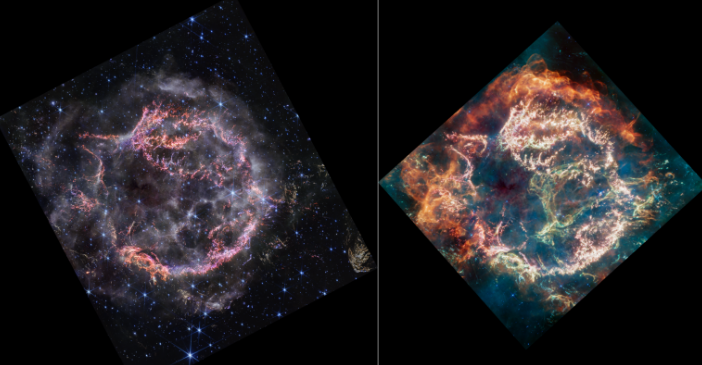
Credit: NASA
Therefore, the scientists translated the infrared light into various hues to create the new image. The new image shows the inner layer of the explosion, composed of sulfur, oxygen, argon and neon of the star.
It is bright orange and light pink.
According to NASA, this gas contains chemicals and dust that will eventually produce new stars.
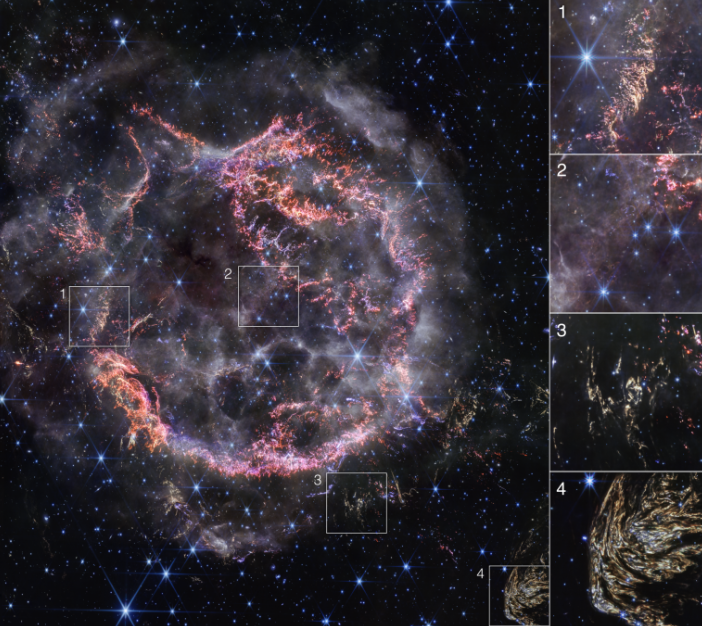
Credit: NASA
Where can you check the publication?
See the post on the ESA Instagram account.
See this post on Instagram
what do you think about it? Let us know in the comments.
For more trending stories, follow us on Telegram.
Categories: Trending
Source: vtt.edu.vn
